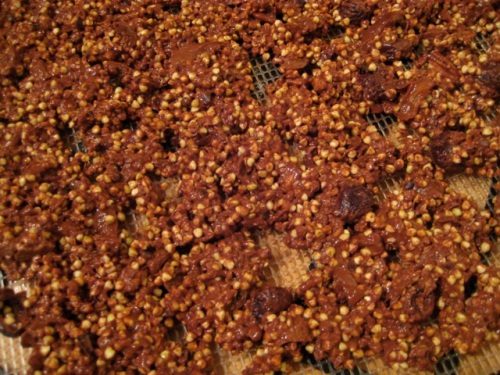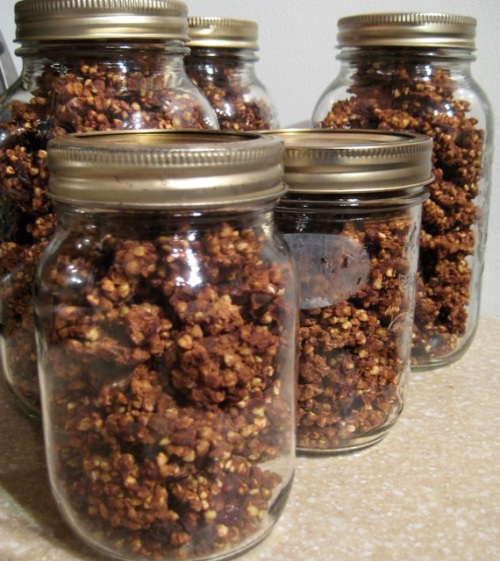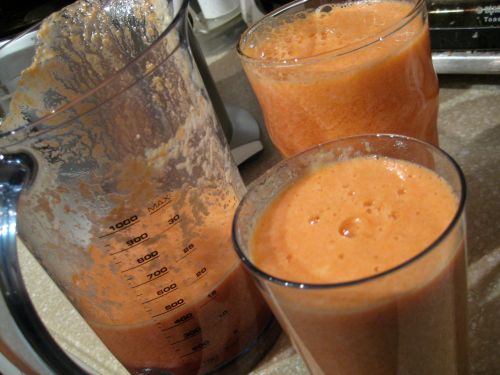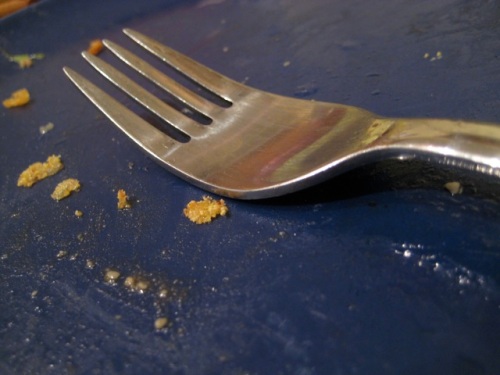I love “traditional” granola, but I don’t love that it has to be super high in sugar and fat in order to clump and get crunchy. (Go ahead – read the label of your favourite boxed granola.) So I was thrilled when I discovered raw granolas, which are typically based around buckwheat and clump due to their time in the dehydrator.
Buckwheat, despite its name (and here I feel like I’m repeating a million other articles, sorry if you know this already) isn’t related to wheat and isn’t technically a grain at all – it’s a seed. (Although I have to say, I’m no biologist, but the line between grain and seed seems odd. I mean, you can plant both of them to get another plant.) In any case, it’s gluten free so safe for those with celiac or other gluten-related problems, and it’s very nutritious and high in protein. Toasted whole buckwheat is common in Eastern Europe but the buckwheat we’re talking about today is untoasted. You can tell them apart in the store by their colour – toasted buckwheat is a lot darker.
Your basic raw granola recipe involved soaking buckwheat overnight and then rinsing well (it gets a slimy texture naturally – don’t worry about this, just rinse it off) and combining with other ingredients, including a liquid sweetener, so that a sticky almost-dough (which will be crumbly) is created. Then it’s dehydrated until dry and crunchy.
This time, I reproduced a recipe from Live – if you live in Toronto, you might have seen their packaged granolas for sale at places like Fiesta Farms and The Big Carrot. I recently downloaded their recipe e-book so I could make things like this and save a bit of money. (Although fairly priced due to quality ingredients and a lot of effort, packaged raw foods aren’t cheap.) It’s a chocolate granola (yum!) with tons of raw cacao powder and cinnamon, dried (but soaked before using) apricots and cherries (my sub for their raisins) and pecans (my sub for their walnuts). As a sweetener I used maple syrup.
Ready to dehydrate:

And ready to eat! I serve with homemade hemp milk.



 Now I’m ready for the week month.
Now I’m ready for the week month.
























